

SPECIAL REPORT: ON THE IMPORTANCE OF PALMYRA
U. S. DEPT. COOPERATION AGREEMENT NUMBER: S-IZ-100-17-CA021
BY Michael Danti, Tate Paulette, LeeAnn Barnes Gordon, Abdalrazzaq Moaz, Cheikhmous Ali, Kathryn Franklin, and David Elitzer
Initial Release: June 2, 2015
DOWNLOAD: REPORT
* This report is based on research conducted by the “Safeguarding the Heritage of the Near East Initiative,” funded by the US Department of State. Monthly reports reflect reporting from a variety of sources and may contain unverified material. As such, they should be treated as preliminary and subject to change.
The ancient city of Palmyra stands out as one of the most remarkable archaeological sites in Syria and, indeed, the world. Following the takeover of the site and the adjacent town of Tadmor by ISIL, Palmyra has been in the news daily. The purpose of this report is to provide a concise introduction to the site and its importance so that the international community can better understand why it should be saved.
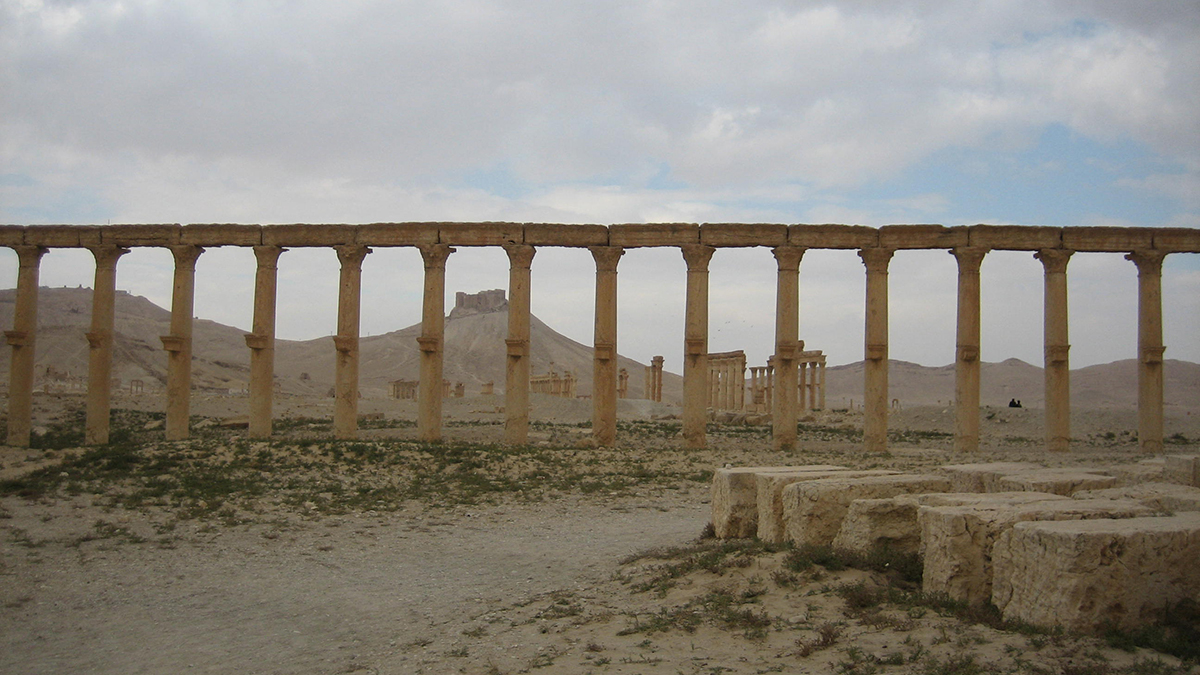
Figure 1: Palmyra, agora (foreground), Colonnaded Street and Qalaat Shirkuh (background) (photo by Tate Paulette, 2005)
Located in the middle of the Syrian Desert, approximately 146 miles (235 km) northeast of Damascus and 130 miles (210 km) southwest of Deir ez-Zor, the monumental ruins of Palmyra date primarily to the city’s heyday between the 1st and 3rd centuries CE. During this period, Palmyra was an economic powerhouse with privileged access to goods flowing along an east-west trade route that linked the Mediterranean to India and China. It was also a cultural center where influences from the Greco-Roman world to the west met and merged with Persian and Parthian influences from the east. The site is a major tourist attraction that draws visitors from all parts of the globe, and tourism has long formed the backbone of the economy for the nearby town of Tadmor.
In recognition of its historical importance and universal cultural value, Palmyra was inscribed on the UNESCO World Heritage List in 1980. As the conflict in Syria escalated and the site came under threat, it was then inscribed on UNESCO’s List of World Heritage in Danger in 2013. More recently, the site and the adjacent modern town of Tadmor have become a focal point in the conflict between Syrian government forces and ISIL, both intent on controlling this strategic location and associated infrastructure (including weapons depots, oil fields, a military airbase, and a prison). The intense fighting in and around Palmyra has sparked a humanitarian crisis, with thousands of people stranded in their homes or attempting to flee. On May 20, 2015, ISIL expelled government forces from the area and established control over both Tadmor and Palmyra. With ISIL in control and the government conducting regular airstrikes in the area, the archaeological remains of the ancient city are now at high risk of combat-related damage, looting by ISIL, and episodes of deliberate destruction, as witnessed at the sites of Hatra and Nimrud in Iraq. Since the fighting began, numerous individuals and groups have called on the international community to take action to protect the people and the cultural heritage of Palmyra. In support of this broader effort, the current report provides an introduction to the site of Palmyra, a summary of damage incurred at the site during the Syrian conflict, and a recap of recent events.
The ancient city of Palmyra
Although located deep in the heart of the Syrian Desert, the city of Palmyra lies alongside a well-watered oasis fed by underground springs. The area was occupied as early as the third millennium BCE, but the settlement rose to prominence during the 1st century CE, when it was incorporated into the Roman Empire. Under Roman rule, Palmyra emerged as a major trading center, uniquely positioned at the midpoint of an important route across the desert, linking the Mediterranean to the Euphrates and beyond. During the 2nd century CE, in particular, wealth flowed into the city and financed the monumental civic construction projects that dominated the urban landscape and that still rise suddenly from the surrounding desert to greet the modern visitor. A meeting point for traders arriving from far-flung regions, Palmyra was a thoroughly cosmopolitan city, and it was inhabited by a multiethnic population of Aramaeans, Arabs, Greeks, and Persians who spoke primarily Greek and Palmyrene (a dialect of Aramaic) and who practiced a variety of different religions, including Zoroastrianism, Judaism, Christianity, and a cult dedicated to the Semitic god Bel.
During the second half of the 3rd century CE, the long-distance trading system went into decline and ushered in a period of intense political maneuvering. Several efforts to establish Palmyra’s independence from Rome led ultimately to an aggressive campaign of expansion under the leadership of the famous queen Zenobia, who led forces into Egypt and Asia Minor before being taken captive and forced to surrender by the emperor Aurelian. In the aftermath, the city found itself more firmly under the control of Rome and was, for example, fortified and expanded for military purposes by the emperor Diocletian. During the Byzantine and Islamic periods that followed, there was continued occupation and even some major construction work at the site, but the city had reached its high point during the centuries of Roman rule.
Today, a visitor to the site of Palmyra can wander through an extensive landscape of beautifully preserved, standing architectural remains. Some of the most important constructions are labeled on the satellite image shown below and will be described briefly here. The city is surrounded by a wall that was built by the Roman emperor Diocletian (r. 284–305 CE) and later repaired by the Byzantine emperor Justinian (r. 527–565 CE). In the southeastern part of the walled city stands the massive Temple of Bel, a walled compound that was built in a series of stages from the Hellenistic period through the late 2nd century CE and that was later fortified during the 12th century CE. The main shrine (or cella), dedicated to the Semitic god Bel, lies near the center of the compound, flanked by a sacrificial altar and a ritual basin and surrounded by a colonnaded portico. From the Temple of Bel, a Colonnaded Street (the Cardo Maximus) runs to the northwest for approximately 1.2 km; lined on each side with massive columns, many of which are still standing, this street forms the main axis of the city. The street makes a slight bend at two points, in the first case passing through a Monumental Arch and in the second passing through an oval square containing the tetrapylon, a massive stepped platform surmounted by four plinths, each of which supported four columns and, originally, a statue.
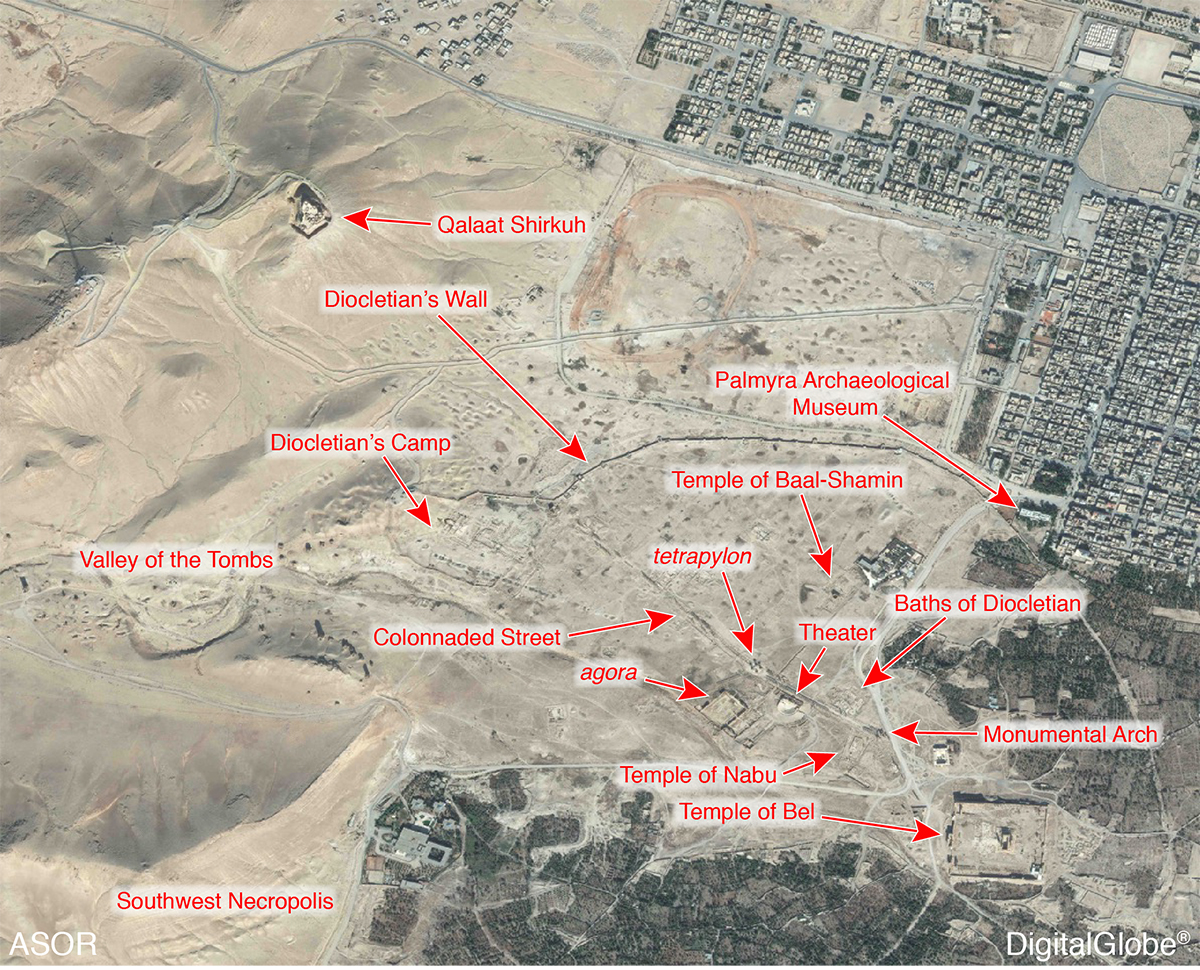
Figure 2: Satellite image showing ancient city of Palmyra with key monuments labeled (ASOR CHI; DigitalGlobe, taken October 26, 2014)
To the south of the Colonnaded Street, three structures stand out. The Temple of Nabu, similar to the Temple of Bel but smaller, was built in the later part of the 1st century CE and was dedicated to Nabu, Mesopotamian god of wisdom. To the west of the Temple of Nabu lies a large, semicircular Theater, built during the first half of the 2nd century CE following the layout typical of Roman theaters. To the southwest of the Theater is a large rectangular enclosure that functioned as the agora or marketplace. On the northern side of the Colonnaded Street, two structures can be singled out. As part of a broader series of civic improvements initiated during the period following the defeat of Queen Zenobia, Diocletian built a bathhouse (Baths of Diocletian) near the Temple of Nabu and the Theatre. The Temple of Baal-Shamin is located some distance to the northwest; this relatively small temple, dedicated to the god of rain, was flanked to the north and south by colonnaded courtyards and was built in a series of phases from the 1st century CE through the mid-2nd century CE. At the far western end of the Colonnaded Street lies an area known as Diocletian’s Camp, where the city plan was expanded during the later 3rd century CE to include a military camp to house the Roman legion.
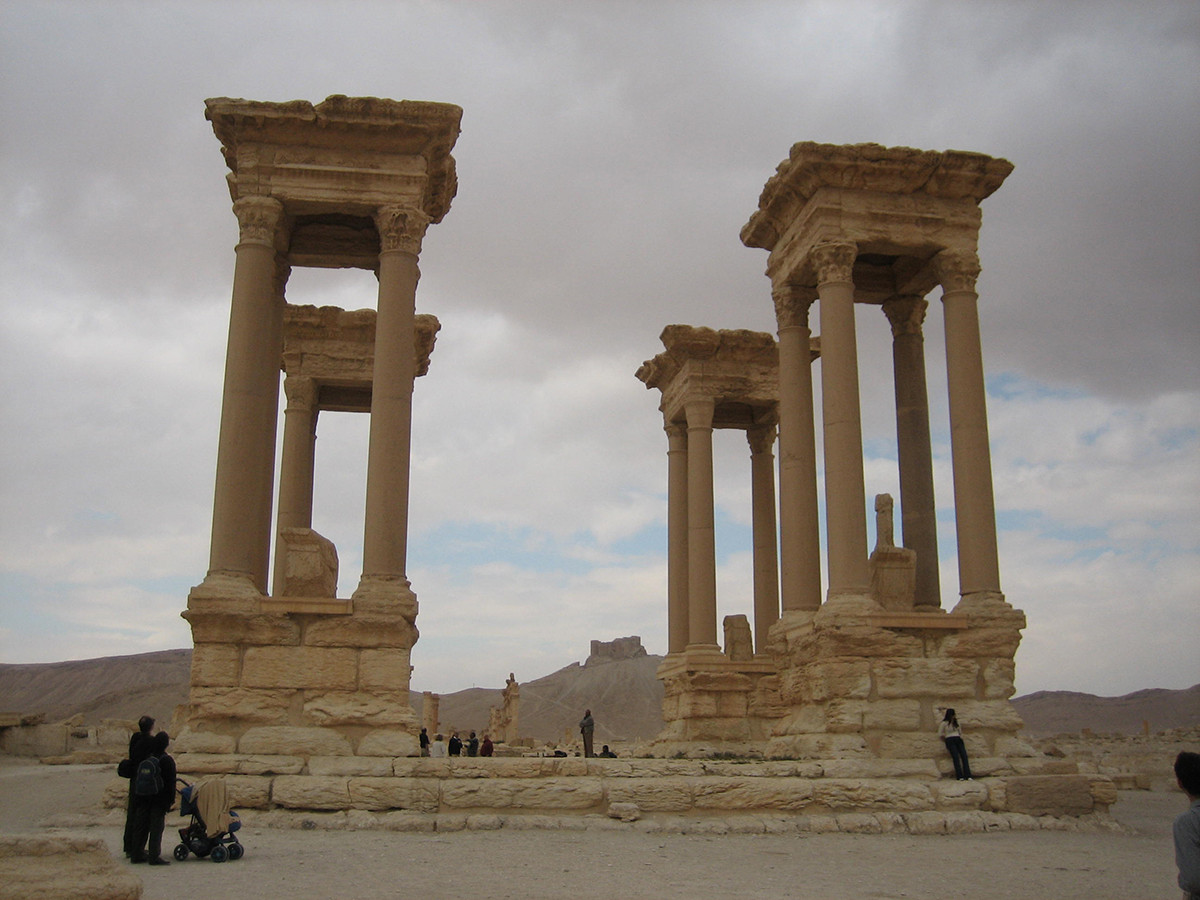
Figure 3: Palmyra, tetrapylon (photo by Tate Paulette, 2005)
Outside the walled boundaries of Palmyra are three areas containing tombs built by wealthy residents of the ancient city: the Valley of the Tombs (or Western Necropolis), the Southwest Necropolis (or Southwest Cemetery), and the Southeast Necropolis (or Southeast Cemetery). These cemeteries include a mixture of four different types of tombs: tower tombs, underground chambers (sing. hypogeum; pl. hypogea), combinations of tower tombs and underground chambers, and house or temple tombs. It is also important to mention Qalaat Shirkuh (also known as the Arab Castle, Palmyra Castle, or Palmyra Citadel), a castle built during the Ayyubid period (approximately 1230 CE) and then later reoccupied by the Lebanese Emir Fakhr al-Din during the early 17th century CE, which enjoys a commanding view across the ancient city.
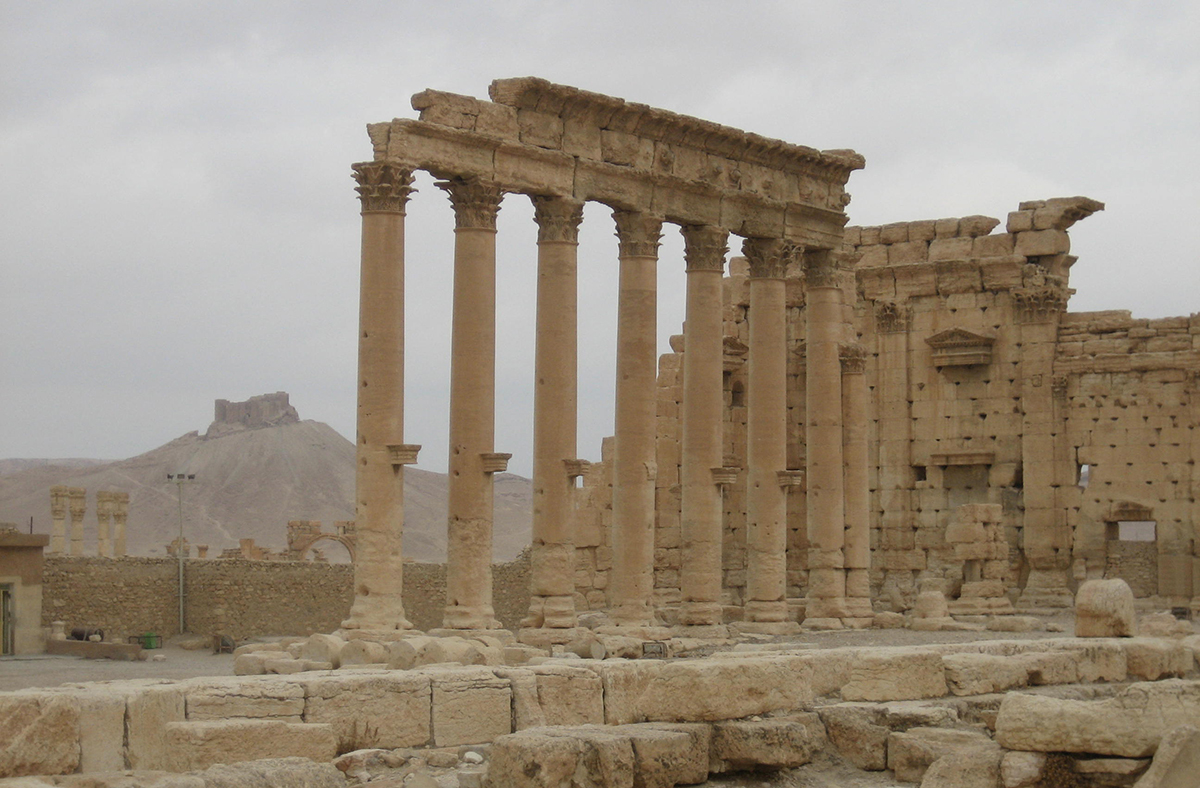
Figure 4: Palmyra, Temple of Bel (foreground) and Qalaat Shirkuh (background) (photo by Tate Paulette, 2005)
The Palmyra Archaeological Museum is located to the north of the ancient site at the entrance to the modern town of Tadmor. It features finds from the site and citadel, as well as traditional Bedouin costumes, jewelry, and other ethnographic objects. The museum is best known for its collection of religious and funerary art, as well as a series of mosaics, all exemplifying the unique artistic style that flourished in this cosmopolitan city. Drawing inspiration from both east (Parthian and Sassanian) and west (Hellenistic and Roman), Palmyrene artists and architects created a distinctive, hybrid style that is visible in the architecture of the city and also, especially, in the wall paintings and relief sculpture that adorned the tombs of the elite.
Damage to the site
At the outset of the conflict in 2011, the Syrian Directorate-General of Antiquities and Museums (DGAM) took preventive measures to protect the site of Palmyra and the museum. These measures included backfilling exposed tombs, reinforcing gates on-site and at the museum, relocating artifacts from the museum to off-site storage areas, and raising awareness about the importance of heritage within the local community. Limited access to the site has, however, allowed the DGAM few occasions to assess damage or initiate further preventive measures. In 2013, military occupation at the site and the construction of defensive earthworks, roads, and temporary structures reportedly escalated, and clashes resulted in some of the earliest reported combat-related damage to monuments and administrative infrastructure. This included bullet and shelling damage to exterior walls and the collapse of several columns within the Temple of Bel.
Extensive illegal excavations and theft have also been reported in the Valley of the Tombs, the Southwest Necropolis, the Southeast Necropolis, and the Camp of Diocletian. Despite efforts by the DGAM to secure the cemeteries, a large number of funerary sculptures were stolen in 2014 from the following tombs: Tomb n5 (Artaban Tomb), Tomb H (Taibul Tomb), Tomb n7 (Bolha Tomb), and Tomb n9. By late 2014, satellite imagery indicated moderate to severe damage within many of the cemeteries, as well as moderate damage to the Roman Barracks (within the Camp of Diocletian), the Temple of Baal-Shamin, and the Temple of Bel and possible damage to the city wall, the Colonnaded Street, the Monumental Arch, and Qalaat Shirkuh.
Recent events
On May 12, 2015, ISIL launched an attack on Palmyra. ISIL forces rapidly overran Syrian government troops on the outskirts of the town of Tadmor and advanced into the town from the north, reaching a point approximately one mile from the ruins of the ancient city, which lie to the southwest of the modern town. By May 17, 2015, Syrian government troops, supported by regime airstrikes, had pushed ISIL out of the northern part of the modern town and regained control of Palmyra. ISIL fighters did not, however, leave the surrounding area, and clashes continued in the following days. On May 20, 2015, Syrian government troops abandoned the area, and ISIL seized complete control of the town of Tadmor and the ancient ruins at Palmyra. In the following days, ISIL fighters reportedly executed a large number of government troops and loyalists, and the Syrian government conducted a series of airstrikes in and around the town. According to the U.S. Department of Defense, coalition aircraft also conducted an airstrike in the area.
ISIL’s advance toward Palmyra and the subsequent seizure of the city have produced a humanitarian crisis. In addition to those killed in battle, hundreds of people – primarily government troops and loyalists – have been executed by ISIL. In addition, thousands have either fled the vicinity or are now struggling to gain access to basic necessities, such as food, water, and electricity.
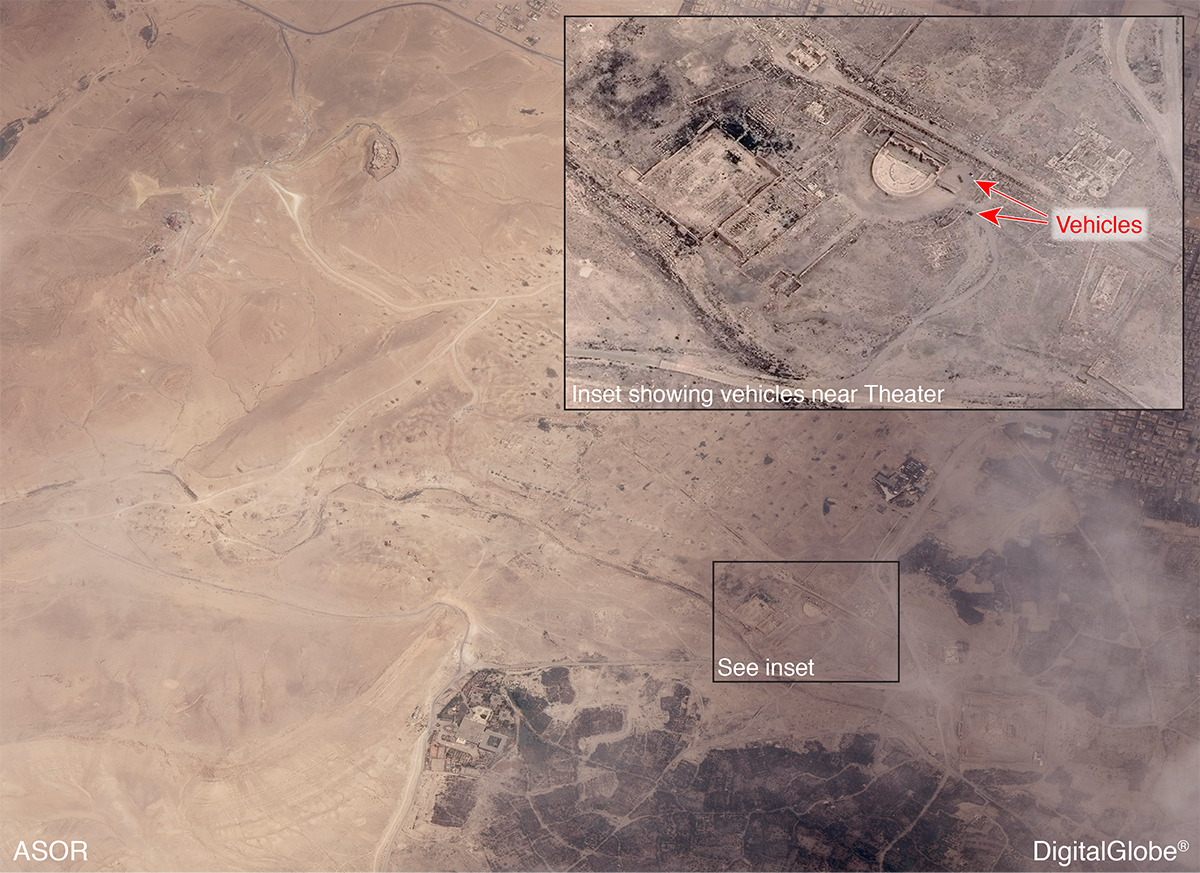
Figure 5: Recent satellite image showing ancient city of Palmyra, no visible damage, vehicles visible near the Theater (ASOR CHI; DigitalGlobe, taken May 27, 2015)
So far, there have been few confirmed reports of damage to the site of Palmyra. Video footage has documented combat-related damage to the Citadel, and unconfirmed reports suggest that several mortars fell within the Temple of Bel. The DGAM has also reported the destruction of modern plaster statues at the Museum by ISIL, and other reports suggest that at least one government airstrike hit a position within the ancient city. ISIL also posted a video and a series of images online showing various views of the ancient city, including the Temple of Bel, the Colonnaded Street, and the Theater. On May 26, 2015, a purported ISIL representative made a statement claiming that the group plans to destroy “statues” at Palmyra but will not “bulldoze” other historical monuments. Given current uncertainties about the extent of looting at the site and the state of the collection at the Palmyra Archaeological Museum, it is impossible to specify exactly which archaeological materials are most at risk. Some rumors suggest that deliberate destruction of sculptures has already begun – with the Lion of Al-lāt that stands at the entrance to the Bel Temple – but these claims have not been confirmed (and have recently been denied by the DGAM). At the same time, it is unclear whether or not ISIL will in fact refrain from harming other monuments at the site, either deliberately or for looting purposes. A satellite image taken on May 27, 2015, shows several trucks in the vicinity of the Theater but otherwise shows no visible damage; it must emphasized, however, that many types of damage would not necessarily be visible in the satellite imagery.
Whether or not significant damage has already occurred, the site must be considered at high risk of further damage – in light of the ongoing airstrikes in the area, the potential for renewed conflict on the ground, and the possibility of looting and deliberate destruction by ISIL. The summary provided above has shown that Palmyra is a site of significant cultural and historical importance. As part of the broader, humanitarian response to the current crisis, the international community should do whatever it can to save Palmyra.
Selected Bibliography (from which the information in this report has been drawn)
Association for the Protection of Syrian Archaeology. 2015. Palmyra. APSA2011: Protect Syrian Heritage. http://www.apsa2011.com/index.php/en/provinces/homs/palmyra.html.
Ball, Warwick. 2007. Syria: A historical and architectural guide. Second edition. Northampton, Massachusetts: Interlink.
Burns, Ross. 2009. The monuments of Syria: A guide. 3rd ed. London: I. B. Tauris.
Carter, Terry, Lara Dunston, and Amelia Thomas. 2008. Syria & Lebanon. 3rd ed. Oakland, California: Lonely Planet.
Danti, Michael. 2001. Palmyrene funerary sculptures at Penn. Expedition 43, no. 3: 33–40. http://www.penn.museum/sites/expedition/palmyrene-funerary-sculptures-at-penn/.
Darke, Diana. 2010. Syria. 2nd ed. Guilford, Connecticut: Bradt Travel Guides Ltd.
Directorate-General of Antiquities and Museums. 2014. State Party Report: State of Conservation of the Syrian Cultural Heritage Sites.
———. 2015. State Party Report: On the State of Conservation of The Syrian Cultural Heritage Sites.
UNITAR. 2014. Satellite-Based Damage Assessment to Cultural Heritage Sites in Syria. http://www.unitar.org/unosat/tbc.
United Nations Educational Scientific and Cultural Organization – World Heritage Centre. 2015a. Ancient City of Bosra. UNESCO-World Heritage Centre. http://whc.unesco.org/en/list/22/.
———. 2015b. State of Conservation (SOC) Site of Palmyra (Syrian Arab Republic) – 2014. UNESCO-World Heritage Centre. http://whc.unesco.org/en/soc/2913.
———. 2015c. State of Conservation: Ancient City of Bosra (Syrian Arab Republic) – 2014. UNESCO-World Heritage Centre. http://whc.unesco.org/en/soc/2912.
———. 2015d. State of Conservation: Ancient City of Bosra (Syrian Arab Republic) – 2013. UNESCO-World Heritage Centre. http://whc.unesco.org/en/soc/1951.
Wolfinbarger, Susan, Jonathan Drake, Eric Ashcroft, and Katharyn Hanson. 2014. Ancient History, Modern Destruction: Assessing the Current Status of Syria’s World Heritage Sites Using High-Resolution Satellite Imagery – September 2014. Washington D.C. http://www.aaas.org/page/ancient-history-modern-destruction-assessing-current-status-syria’s-world-heritage-sites-using.